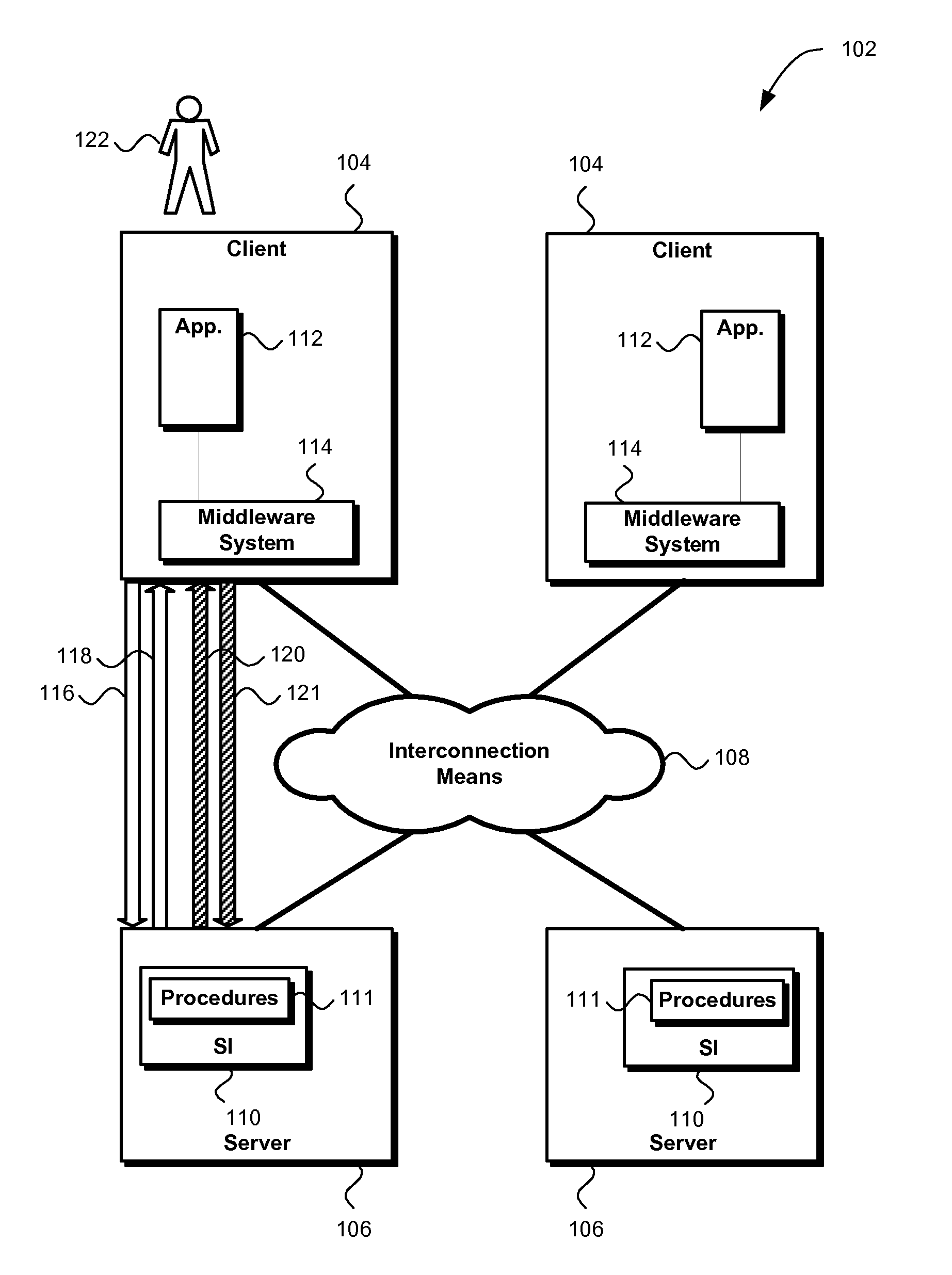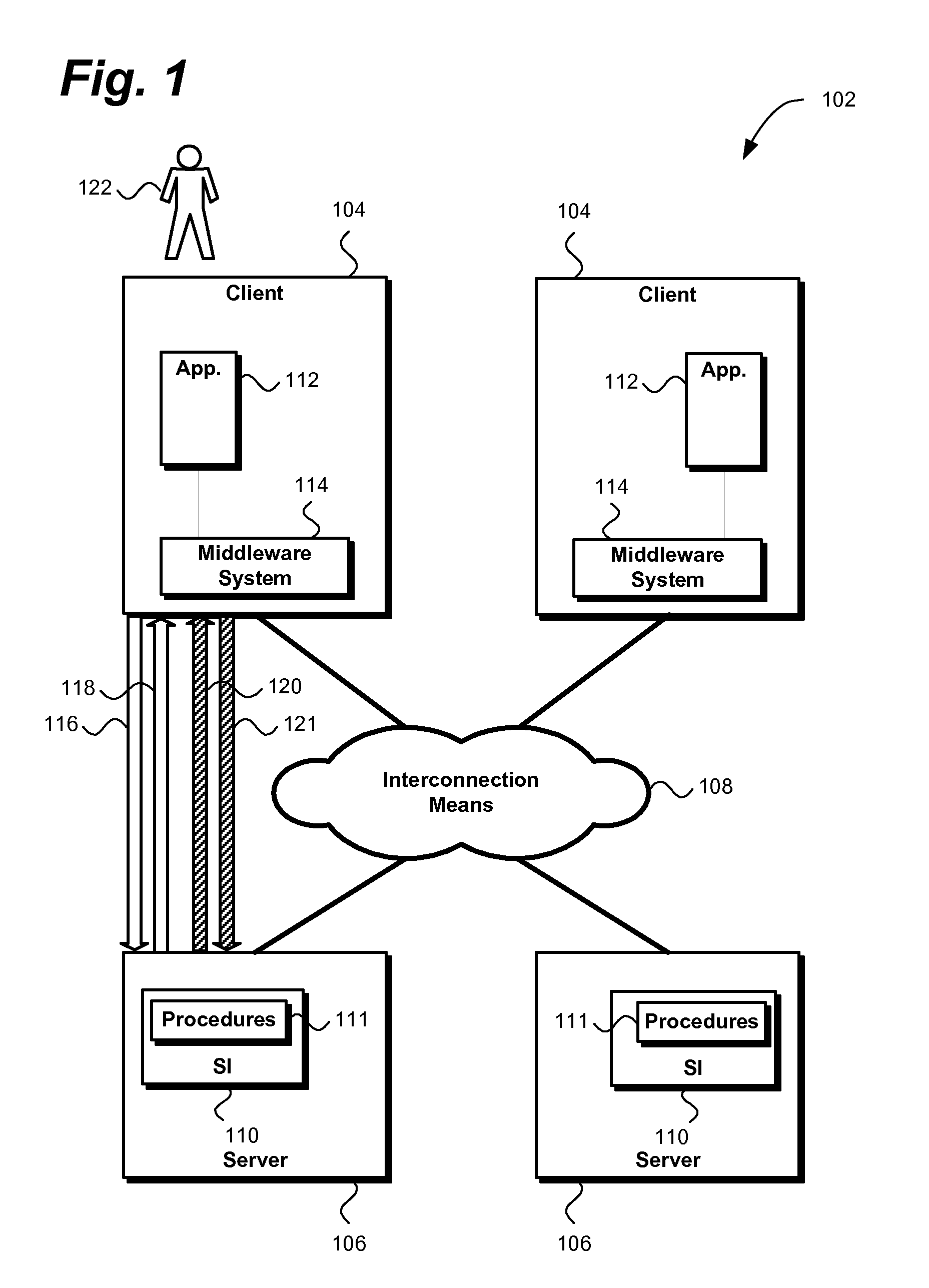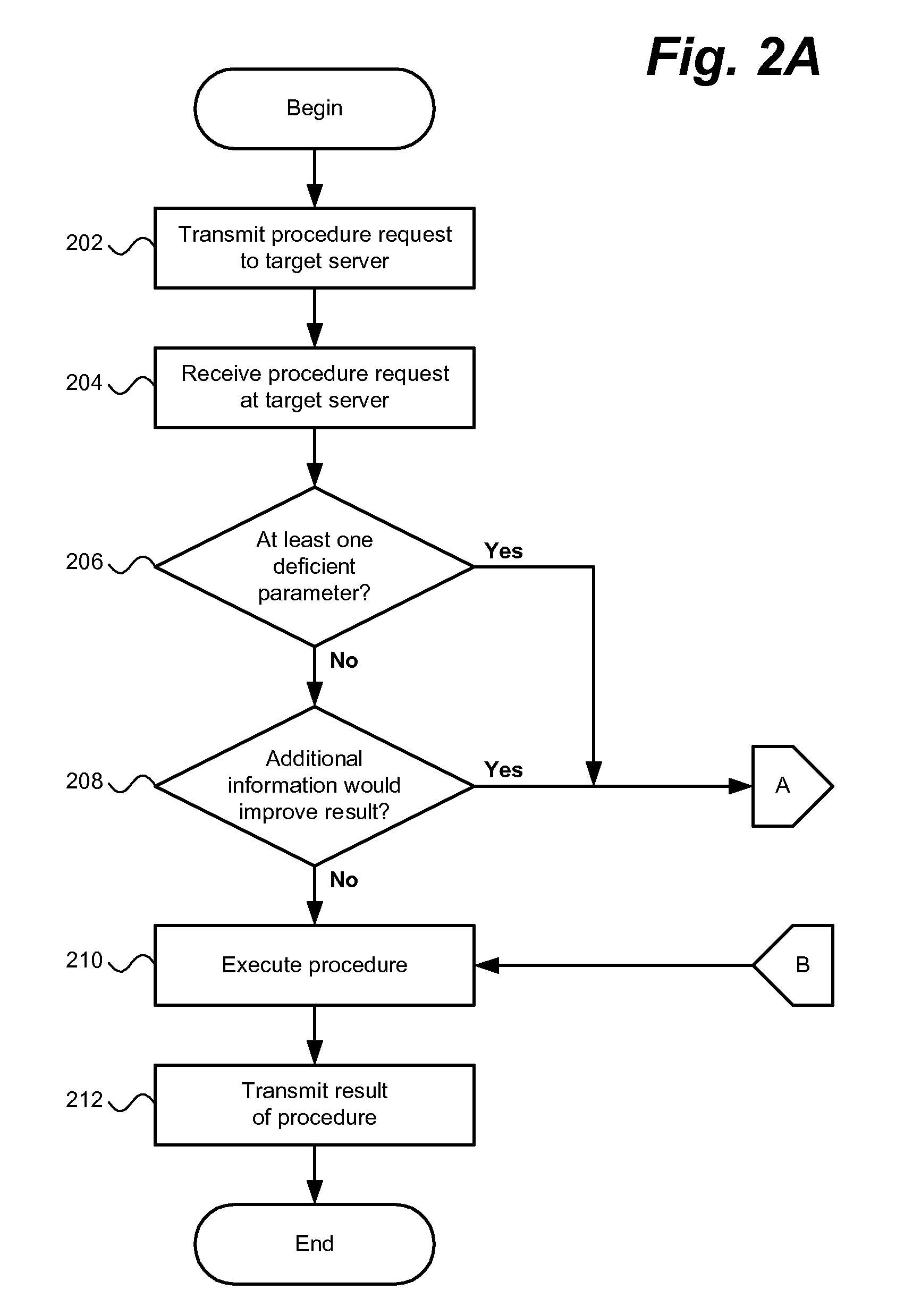System and method for flexible and deferred service configuration
a service configuration and service technology, applied in the field of service configuration, can solve the problems of large number of programming errors, and frequent reading of apis, and achieve the effect of less error-pron
- Summary
- Abstract
- Description
- Claims
- Application Information
AI Technical Summary
Benefits of technology
Problems solved by technology
Method used
Image
Examples
Embodiment Construction
[0022]The following description details how the present invention is employed to configure a service in a manner that is deferred, flexible and out-of-band. Throughout the description of the invention reference is made to FIGS. 1-6. When referring to the figures, like structures and elements shown throughout are indicated with like reference numerals.
[0023]FIG. 1 shows an exemplary system embodying the present invention. The system 102 may assume any of a wide variety of forms. It may be designed to accomplish any of a variety of goals. The system may be a client / server environment wherein clients and servers are connected via a network.
[0024]The system 102 includes one or more clients 104. A client may be implemented in hardware, in software or a combination thereof. A client may be a general purpose computer. Such a computer may be based on a general purpose operating system, such as Windows®, Mac OS® or Linux®. Windows is a registered trademark of Microsoft Corporation, Redmond, ...
PUM
 Login to View More
Login to View More Abstract
Description
Claims
Application Information
 Login to View More
Login to View More - R&D
- Intellectual Property
- Life Sciences
- Materials
- Tech Scout
- Unparalleled Data Quality
- Higher Quality Content
- 60% Fewer Hallucinations
Browse by: Latest US Patents, China's latest patents, Technical Efficacy Thesaurus, Application Domain, Technology Topic, Popular Technical Reports.
© 2025 PatSnap. All rights reserved.Legal|Privacy policy|Modern Slavery Act Transparency Statement|Sitemap|About US| Contact US: help@patsnap.com



